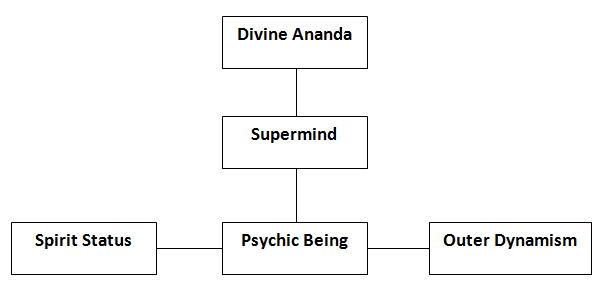|
Divided Existence
The problem is that in a true spiritual life centered around the soul-principle, the ego has to be totally replaced so that one experiences a vast impersonality that does not support a dynamic action that is needed in external life. Indeed, “in this impersonality there is at first no key to an ordered dynamism of action”. If somebody wishes to reconcile a spiritual life with an ego-centered dynamism, what usually happens is that one lives a divided but not an integrated life. One is divided into two parts of being: “the spiritual within, the natural without; in one there is the divine realisation seated in a perfect inner freedom, but the natural part goes on with the old action of Nature, continues by a mechanical movement of past energies her already transmitted impulse”. (Ibid, pg.244)
In a section of spiritual practitioners, the old ego-centric life may be entirely dissolved. In such cases the outer life can become apparently incoherent though there might be the luminosity of the Self within. Such a state can give rise to different types of spiritually inclined personalities:
(a) One can become “outwardly inert and inactive, moved by circumstances or forces but not self-mobile” -- the “jadavat”;
(b) One can become "outwardly a child though within is a plenary self-knowledge” – the “balavat”:
(c) One can become “inconsequent in thought and impulse though within is an utter calm and serenity” – the “unmattavat”
(d) One can become a “wild and disordered soul though inwardly there is the purity and poise of the Spirit”—the “pisacavat”. (Ibid)
What could happen if someone who has achieved a certain degree of soul-status can also develop an ordered dynamism in outer nature? At best there would be “a continuation of superficial ego-action witnessed but not accepted by the inner being, or a mental dynamism that cannot be perfectly expressive of the inner spiritual realization; for there is no equipollence between action of mind and status of spirit". ” (Ibid)
The Supramental Integration
At the end of all speculations it has to be acknowledged that under the present circumstances there cannot be a perfect harmony between the spirit status and dynamism of action in outer life. It is only the Supermind which in its descent can create the ideal and perfect conditions of harmony for it alone carries the Light of integration. “Even at its best where there is an intuitive guidance of Light from within, the nature of its expression in dynamism of action must be marked with the imperfections of mind, life and body, a King with incapable ministers, a Knowledge expressed in the values of the Ignorance. Only the descent of the Supermind with its perfect unity of Truth-Knowledge and Truth-Will can establish in the outer as in the inner existence the harmony of the Spirit; for it alone can turn the values of the Ignorance entirely into the values of the Knowledge”. (Ibid)
There would of course be a grammar of the whole process for such a great thing like a perfect harmony between outer and inner life cannot come without a methodical discipline. At first, one needs to integrate the various strands of the being, the various parts and planes of consciousness around the psychic being or soul-principle that surpasses the ego. Next, the psychic being has to be related to its divine counterpart in the upper hemisphere of consciousness – to the Bliss or Ananda principle of the triune Reality –Sachchidananda. This linking can only be done by the power of the Supermind with “an integral completeness, an intimacy that becomes an authentic identity; for it is the Supermind which links the higher and the lower hemispheres of the One Existence” (Ibid, pg.245). “In Supermind is the integrating Light, the consummating Force, the wide entry into the supreme Ananda: the psychic being uplifted by that Light and Force can unite itself with the original Delight of existence from which it came: overcoming the dualities of pain and pleasure, delivering from all fear and shrinking the mind, life and body, it can recast the contacts of existence in the world into terms of the Divine Ananda”(Ibid)
In other words, the supreme harmony of outer and inner life lies in reorganizing both in terms of the Divine Ananda -- a feat that can only be made possible by the descent of the Supermind; the psychic being playing an intermediary role in the process. In this way we can move from an outer dynamism to a dynamic spirituality.
Table:

Date of Update:
10-Aug-19
- By Dr. Soumitra Basu
|

